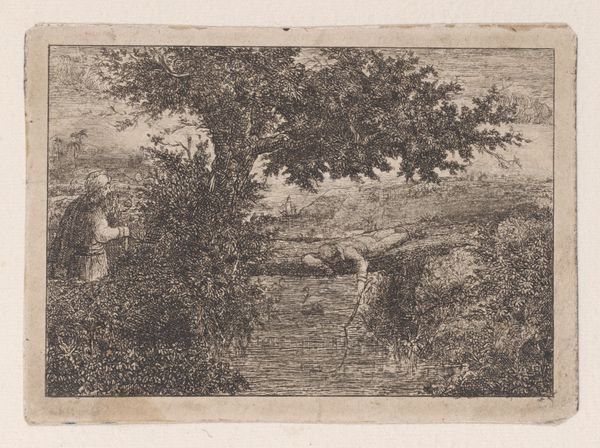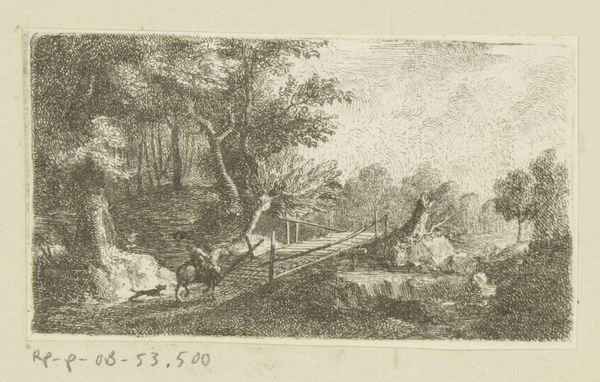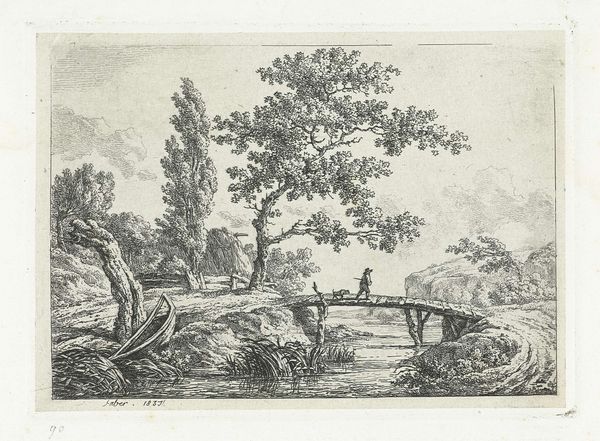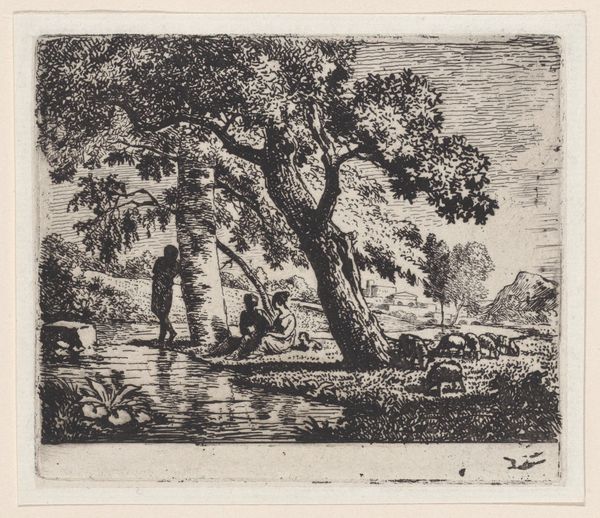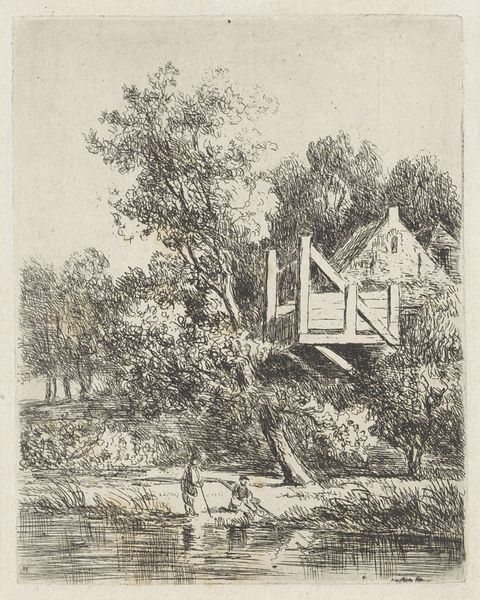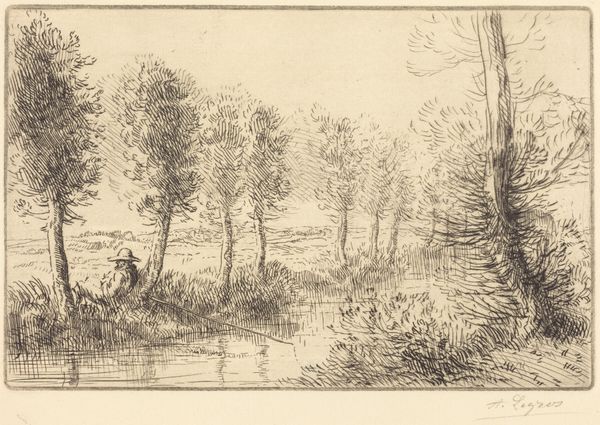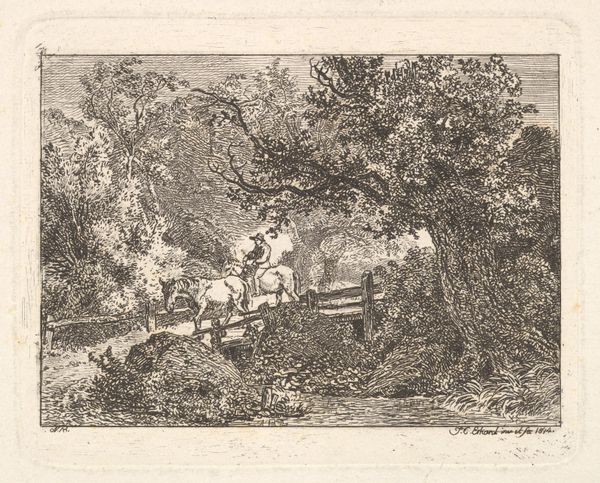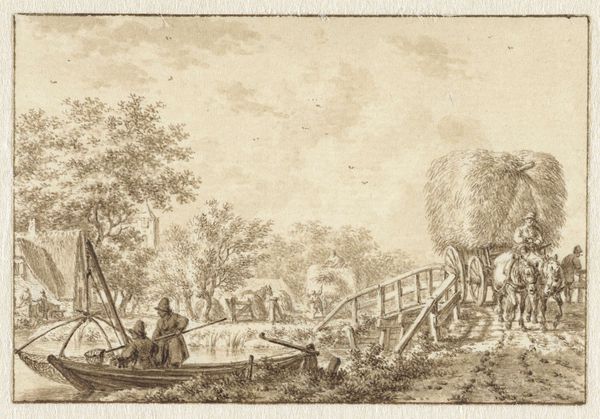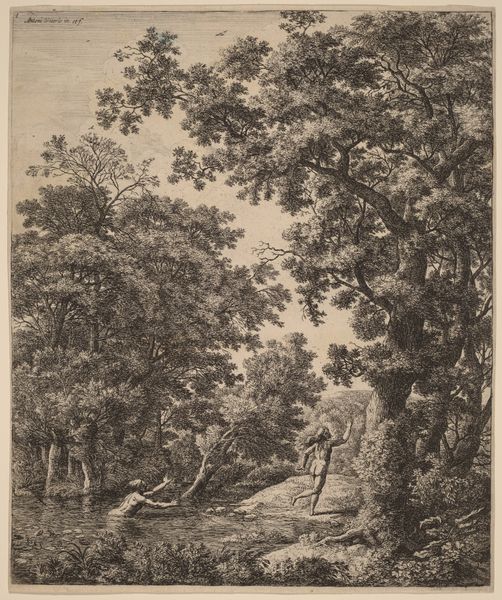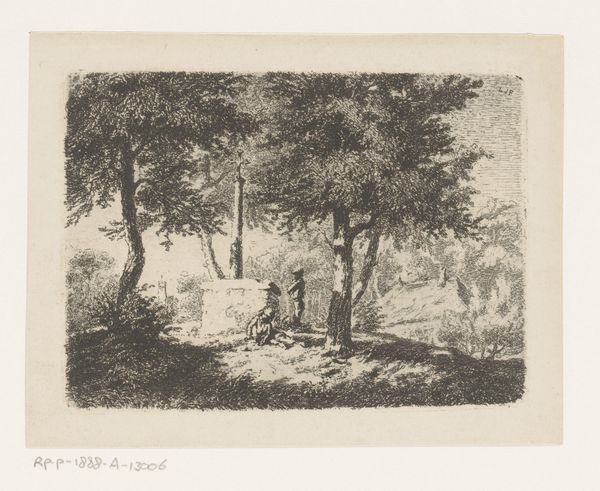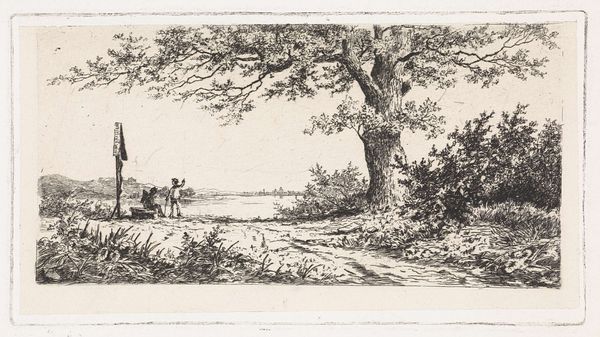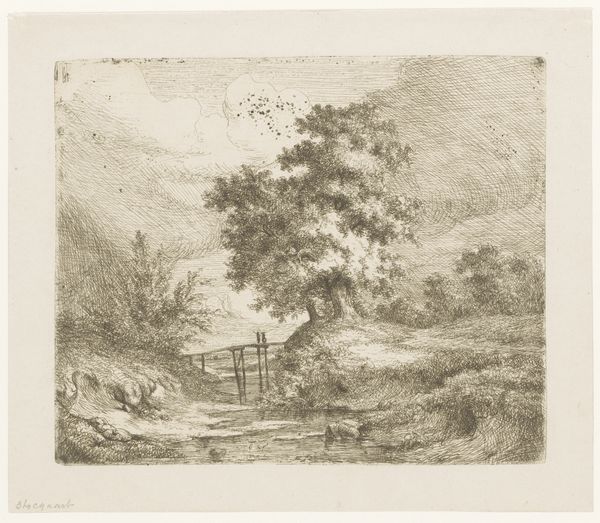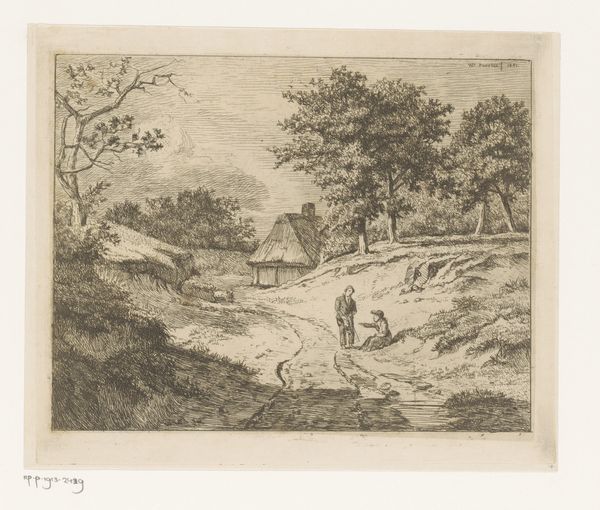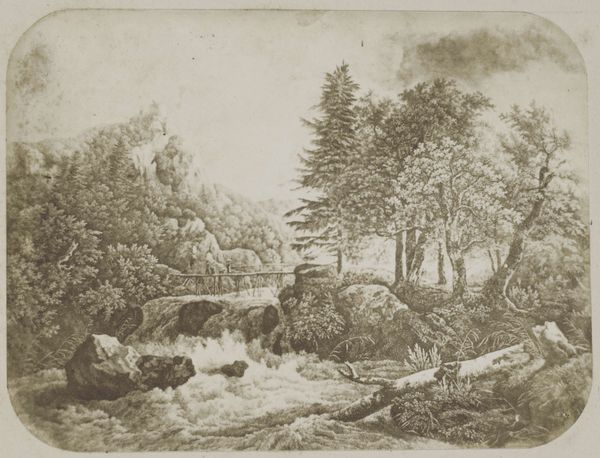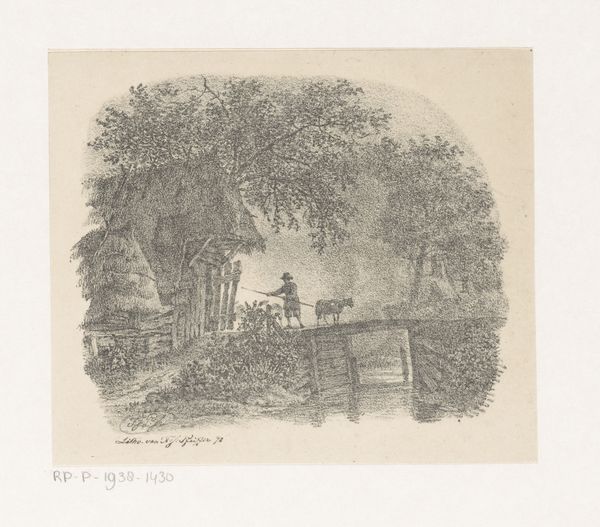
drawing, print, etching
#
drawing
#
narrative-art
#
dutch-golden-age
# print
#
etching
#
landscape
#
figuration
#
genre-painting
#
realism
Dimensions: sheet: 4 1/2 x 6 9/16 in. (11.4 x 16.7 cm)
Copyright: Public Domain
Curator: This etching by Adriaen van Ostade, titled "Two Anglers on a Bridge," dates back to 1647 and captures a seemingly simple, everyday scene. Editor: My first impression is of stillness, a muted intimacy despite the landscape setting. The composition directs my gaze towards the central bridge, emphasizing its weathered materiality. Curator: Precisely. Van Ostade was known for his meticulous attention to detail in rendering scenes of peasant life and rural environments. We see here the techniques of etching and the subsequent prints that were widely sold and collected during the Dutch Golden Age. Note how he uses line and cross-hatching to convey light, shadow, and texture, all stemming from an elaborate series of labor processes in the studio. Editor: Yes, the layering of lines indeed builds a complex tonal range that mimics a sense of decay. The very subject is so closely rendered through texture—the roughness of the wooden bridge contrasted against the relative smoothness of the water below. The composition is interesting: how the figures, in their slight slouch, subtly echo the bridge’s own downward slant. Curator: It's not just about what's depicted, but the social and economic factors involved. The ready availability and affordability of prints like these democratized art consumption during the period. This print represents more than just anglers and a bridge; it is about the conditions of artistic production and the accessibility of imagery for a wider audience. Editor: Absolutely, and if we see these angling figures from a more formal perspective, notice the interplay of vertical and horizontal lines creates a stable yet visually interesting image. And in this stability we receive that pervading muted feeling that I detected initially. The material presentation—black lines on white—yields to quiet observation in that contrast. Curator: Ultimately, works like "Two Anglers on a Bridge" reveal much about 17th-century Dutch society: their values, pastimes, and how art circulated within their communities, which allows for considering how a single artwork could both reinforce and negotiate class structures. Editor: Indeed, from both the visible structure of the bridge itself to the deeper composition it reveals that Dutch painters held unique relationships to the passage of time and quiet moments. Curator: A valuable thing to be reminded of through observing Ostade's work here at the Metropolitan Museum of Art. Editor: A contemplative exercise to partake of in this viewing of this modest yet well designed print.
Comments
No comments
Be the first to comment and join the conversation on the ultimate creative platform.
